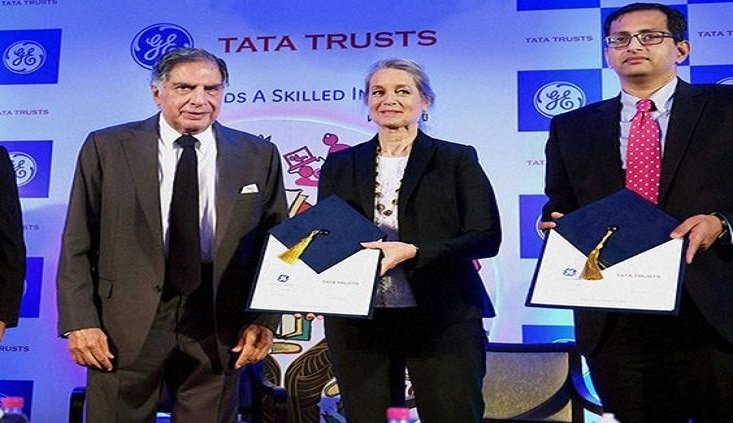Ratan Tata Business Empire, an iconic Indian employer, is known for his visionary control, strategic foresight, and philanthropic efforts. As the preceding chairman of Tata Sons, he has been instrumental in transforming the Tata Group into a global conglomerate with numerous pursuits spanning metal, motors, data generation, telecommunications, and extra. His legacy is not certainly restrained to business; it consists of a commitment to social duty, innovation, and sustainable development.
Early Life and Education
Ratan Tata was born on December 28, 1937, in Navsari, Gujarat, into the distinguished Tata family. He is the son of Naval Tata and Sooni Tata and the first-rate-grandson of Jamset ji Tata, the founding father of the Tata Group. Ratan Tata pursued his early training at the Campion School in Mumbai and later studied structure at the University of California, Berkeley. He additionally finished an Advanced Management Program at Harvard Business School.
Entry into the Tata Group
Ratan Tata Business Empire joined the Tata Group in 1961, to start with walking at Tata Steel in Jamshedpur. He rapidly rose via the ranks, gaining precious experience and insights into numerous facets of the conglomerate. In 1991, he succeeded J.R.D. Tata became the chairman of Tata Sons, turning into the 5th chairman inside the organization’s statistics. Under his management, the Tata Group underwent big changes that propelled it into the global vicinity.
Strategic Transformations
One of Ratan Tata’s hallmark techniques turned into diversification. Recognizing the want to conform to converting marketplace dynamics, he progressed the institution’s portfolio into sectors like data era, retail, and motors. Under his management, Tata Consultancy Services (TCS) emerged as a global IT powerhouse, contributing notably to the enterprise’s income.
In the auto region, Ratan Tata has become particularly ambitious. The launch of the Tata Indica in 1998 marked the employer’s access into the passenger car marketplace. However, his most bold task modified into the Tata Nano, added in 2008 because the location’s cheapest automobile. Although the Nano confronted challenges in the marketplace, it symbolized Tata’s determination to innovation and affordability.
Global Expansion
Ratan Tata’s tenure became marked by the use of a strong consciousness on international growth. He spearheaded several key acquisitions, together with:
- Corus Group (2007): The acquisition of the Anglo-Dutch steelmaker Corus for $13 billion marked Tata Steel’s transformation into one of the top international metallic producers.
- Jaguar Land Rover (2008): Tata Motors acquired the expensive car producers from Ford for $2.Three billion. This circulate not best diverse Tata’s automobile portfolio, however, also brought prestigious brands beneath the institution, enhancing its global stature.
- Tata Global Beverages (now Tata Consumer Products): Ratan Tata moreover elevated into the beverage place, with the acquisition of manufacturers like Tetley, significantly broadening the agency company’s global acquisition.
These strategic acquisitions no longer only numerous Tata’s pastimes however furthermore positioned the institution as an effective participant in several international markets.
Commitment to Social Responsibility
Ratan Tata Business Empire enterprise extends beyond earnings-making. He firmly believes within the importance of enterprise social responsibility (CSR). Under his control, Tata Group has continuously prioritized social duties, at the aspect of education, healthcare, rural improvement, and girls’ empowerment.
The Tata Trusts, which maintain an extensive stake in Tata Sons, were pivotal in assisting numerous social motives. Initiatives like the Tata Institute of Social Sciences (TISS) and Tata Medical Center exemplify the group’s self-discipline to improving the high-quality of existence for people at some point of India.
Challenges and Criticism
Despite his many successes, Ratan Tata’s adventure modified into no longer without demanding situations. The Tata Group confronted large scrutiny at some point of the financial crises and worldwide downturns, specially with the Tata Nano undertaking, which struggled to meet earnings expectations. Additionally, the employer encountered worrying conditions in integrating obtained corporations, mainly Jaguar Land Rover.
Critics have additionally stated the disturbing situations in maintaining the conventional values of the Tata Group at the same time as pursuing competitive increase strategies. Balancing innovation with moral industrial employer practices has been a recurring difficulty during Tata’s tenure.
Legacy and Retirement
In 2012, Ratan Tata announced his retirement from the position of chairman of Tata Sons, turning in the reins to Cyrus Mistry. His departure marked the stop of a generation characterized with the useful resource of using amazing boom and transformation for the Tata Group. Even after retirement, Tata stays actively involved in numerous philanthropic projects and continues to serve on numerous forums and advisory committees.
Ratan Tata Business Empire management has left an indelible mark on Indian enterprise and society. He is well-known no longer just for his enterprise acumen but furthermore for his integrity, humility, and determination to social motives. His philosophy of control, which emphasizes moral practices and prolonged-time period thinking, has inspired limitless marketers and enterprise leaders.
Conclusion
Ratan Tata’s commercial enterprise company empire is a testament to visionary control, resilience, and a dedication to social responsibility. His capability to navigate complicated stressful conditions and stress innovation has transformed the Tata Group right right into a worldwide powerhouse. Beyond the numbers and acquisitions, Tata’s legacy is rooted in his unwavering perception in the energy of commercial enterprise organization to make a terrific effect on society. As India keeps to comply inside the global monetary system, Ratan Tata’s impact will in reality resonate, serving as a guiding light for future generations of organization leaders.
